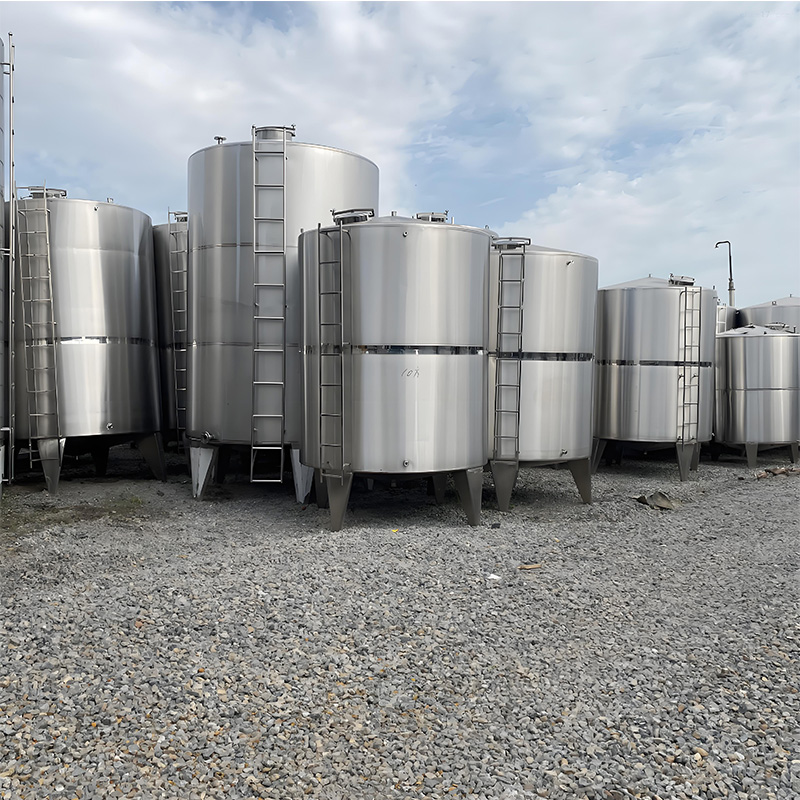Stainless Steel Water Storage Tank: Top 5 Must-Know Buying Secrets!

Stainless Steel Water Storage Tank: Top 5 Must-Know Buying Secrets!
The Hidden Dangers in Your Water Tank Purchase
Picture this: You’ve installed a shiny new stainless steel water storage tank, only to find mysterious rust stains within months. Sadly, this nightmare scenario plays out daily for uninformed buyers. The water tank industry faces rampant issues – from substandard materials to deceptive capacity claims. Many manufacturers cut corners using inferior 201-grade steel instead of food-grade SUS304, sacrificing safety for profit. Shockingly, some “1-ton” tanks hold merely 400kg of water! How can you avoid these traps? Let’s uncover the truth together.
Secret 1: Decoding Steel Grades – Why SUS304 Matters
Not all stainless steel is created equal. Food-grade SUS304 stainless steel contains higher nickel content (8-10.5%) and chromium (18-20%), forming a protective layer against corrosion. This is crucial for water safety. Non-food grade alternatives like 201 steel contain manganese which can leach into water, especially in acidic environments.
Real-world impact: While SUS304 tanks last 20+ years, 201-grade tanks often fail within 1-2 years in areas with poor water quality. Always demand material certification – reputable suppliers provide this documentation willingly. Our team tested both materials in 2024: SUS304 showed 3x better corrosion resistance than cheaper alternatives.
⚠️ Critical Warning: The Thickness Scam
Dishonest sellers often exaggerate steel thickness. Standard residential tanks (under 2m³) use 0.4-0.5mm steel. If someone promises 1.0mm+ thickness at bargain prices, verify with calipers. Each 1kg weight difference indicates ~$50 material cost variation! Always weigh the steel sheets before fabrication.
Secret 2: Capacity Verification Techniques
Here’s an industry secret: Many “1-cubic-meter” tanks actually hold just 400-700 liters. How to confirm real capacity? Before installation:
- Measure internal dimensions (length × width × height)
- Convert to cubic meters (1m³ = 1,000 liters)
- Request calibration reports from manufacturers
Commercial users should consider certified tanks with volume markings. Pro tip: Install a transparent level gauge tube for instant visual verification.
Secret 3: Technical Features Worth Paying For
Premium stainless steel water storage tanks offer smart engineering:
- Dual-sealed access points – Prevent insect/contaminant entry
- 45° sloped bottoms – Enable complete drainage (no stagnant water)
- Modular design – Allows future capacity expansion
For drinking water systems, insist on mirror-finish polishing (Ra ≤0.4μm). This smooth surface inhibits bacterial growth and enables easier cleaning.
| Feature | SUS304 (Food Grade) | 201 Grade (Decorative) |
|---|---|---|
| Nickel Content | 8-10.5% | 0.5-4.5% |
| Corrosion Resistance | Excellent (20+ years) | Poor (1-5 years) |
| Water Safety Certification | NSF/ANSI 61 Certified | Not Certified |
| Price Premium | +35-50% | Base Price |
Secret 4: Installation & Maintenance Mastery
Proper handling extends tank life significantly. During our 2025 warehouse project, we learned:
- Transportation: Always lift from structural supports – never use pipes or valves as leverage points
- Foundation: Create level concrete base extending 6″ beyond tank perimeter
- First Clean: Sanitize with food-grade hydrogen peroxide (not bleach!)
- Seasonal Care: Drain completely before freezing temperatures arrive
- Inspection Routine: Check weld seams quarterly for stress marks
Fun fact: Applying thin vegetable oil then heating creates protective film (traditional Chinese technique). This simple trick reduces mineral deposits by 40%!
Secret 5: Navigating Supplier Selection
Cut through marketing hype with these verification steps:
- Certification Check: Demand ISO 9001 and WRAS certificates
- Factory Tour: Inspect welding equipment (automated argon welding preferred)
- Sample Testing: Conduct salt spray tests on material samples
Interestingly, reputable manufacturers like this stainless steel water storage tank producer openly share production videos. Always choose suppliers offering comprehensive 10-year warranties covering both materials and workmanship.
Case Study: Avoiding Costly Mistakes
A hotel project nearly failed when their “304 stainless” tank developed pinhole leaks. We discovered:
- Supplier used 201 steel with fake SUS304 labels
- 0.3mm thickness instead of promised 0.5mm
- No internal polishing – rough seams trapped bacteria
By switching to certified stainless steel water storage tank producers, they achieved 30% longer lifespan despite 20% higher initial cost. The lesson? Never compromise on verification.
Buyer’s Checklist
- ✅ Material Certification (SUS304 with traceable batch number)
- ✅ Third-party Thickness Verification Report
- ✅ Capacity Testing Documentation
- ✅ Food-grade Polishing Certificate (for potable water)
- ✅ 10-year Warranty Documentation
- ✅ NSF/ANSI 61 or WRAS Certification
FAQs: Expert Answers
Q: How often should I clean my stainless steel water tank?
A: Annually for residential use; quarterly for commercial. Use food-grade cleaners only – never hydrochloric acid!
Q: Can I install the tank outdoors?
A: Yes, but add UV-protective insulation jacket. Direct sunlight heats water and promotes algae growth.
Q: Why choose stainless over plastic tanks?
A> Stainless tanks offer 3x longer lifespan, superior temperature resistance, and zero chemical leaching. They maintain water freshness significantly better.
Q: What’s the ideal position for inlet/outlet ports?
A> Inlet at top, outlet at bottom opposite side. This creates natural water cycling that reduces stagnation.









